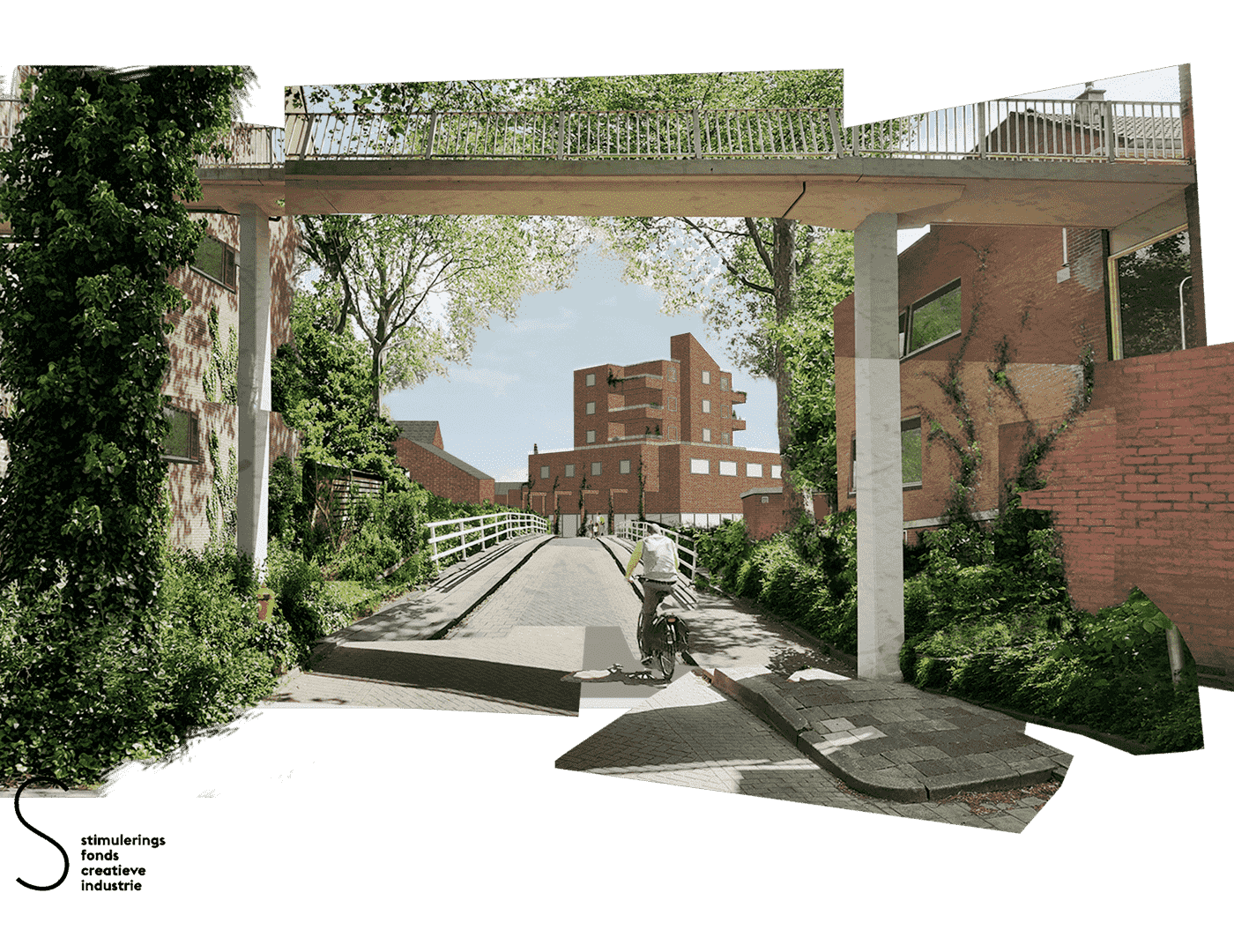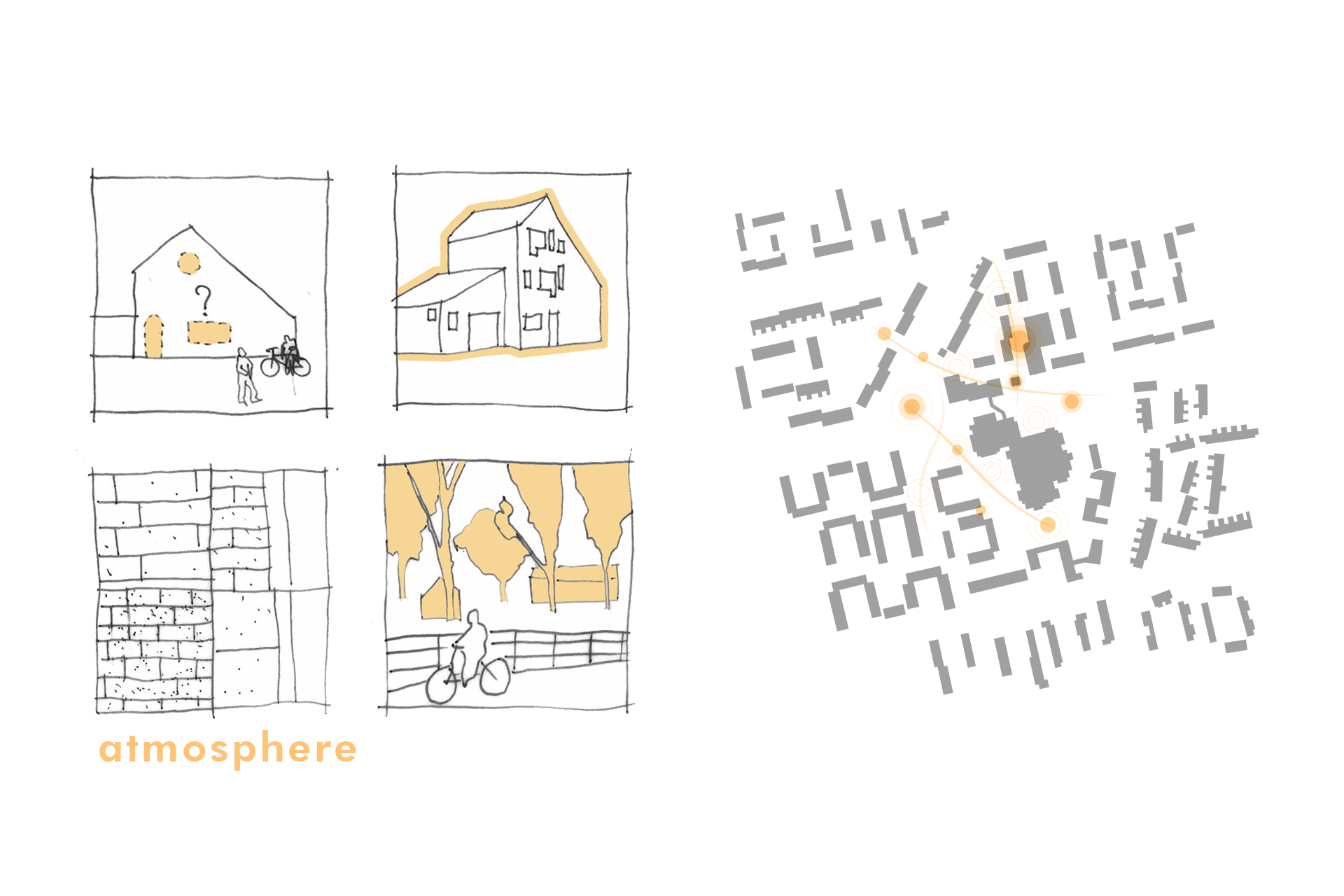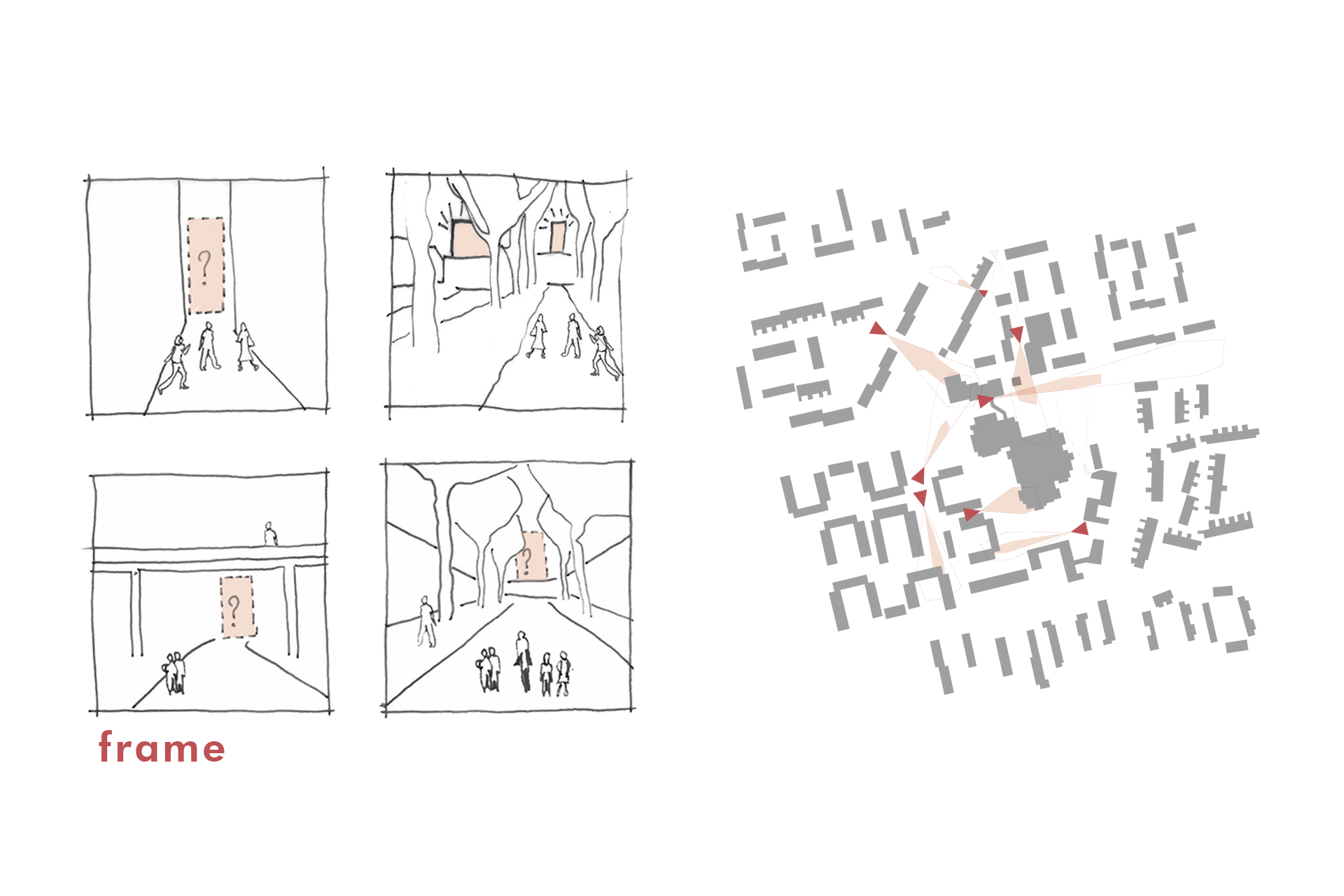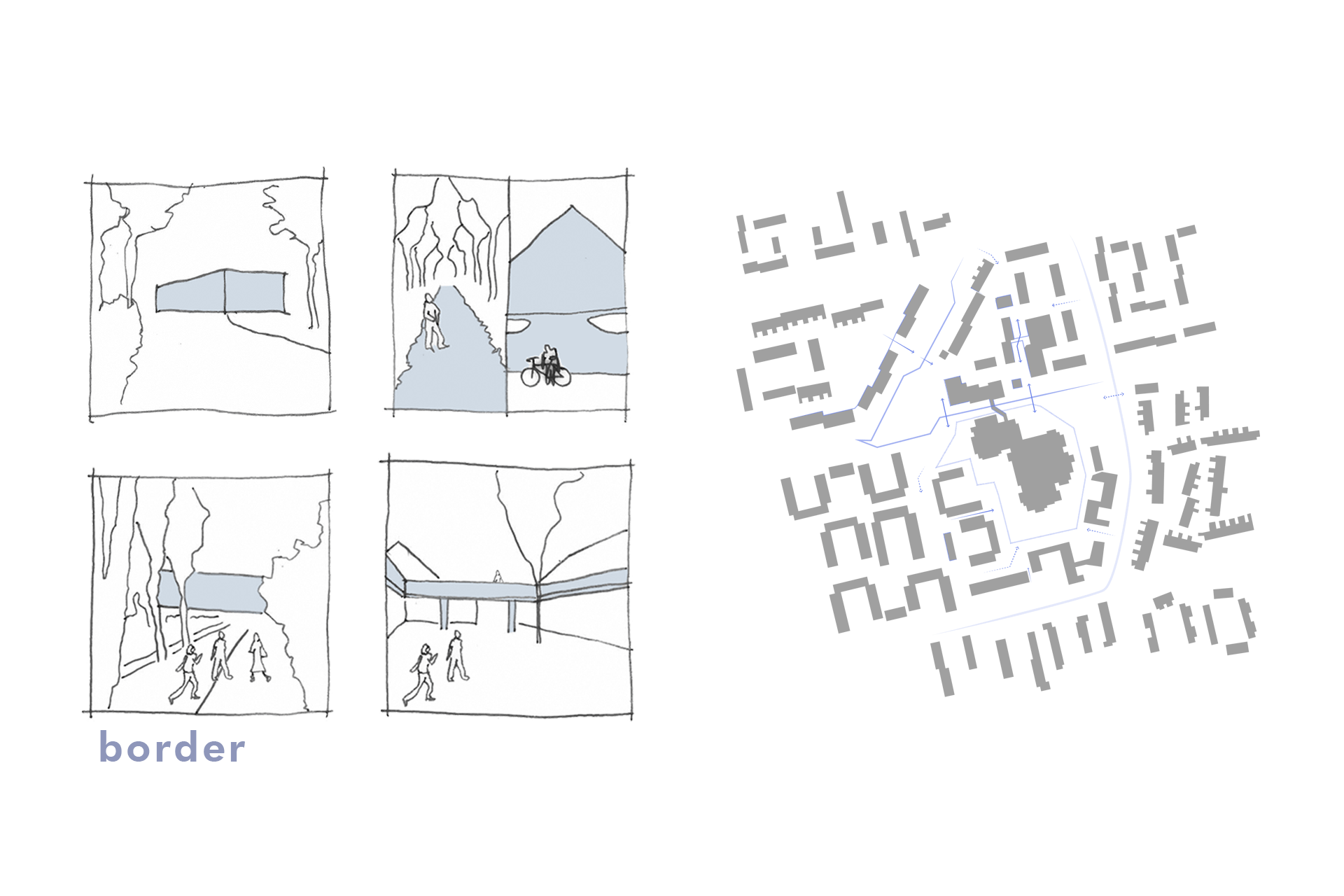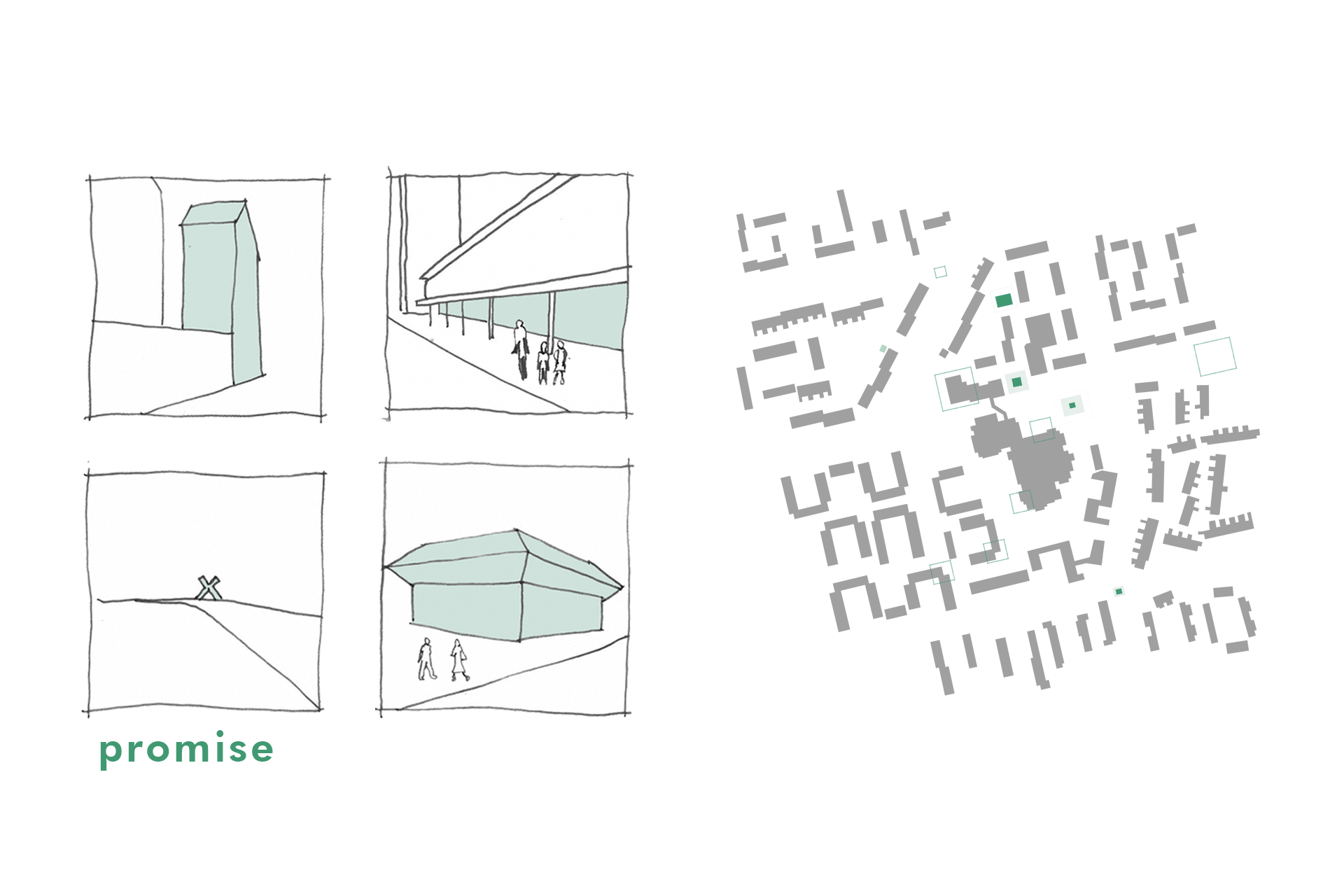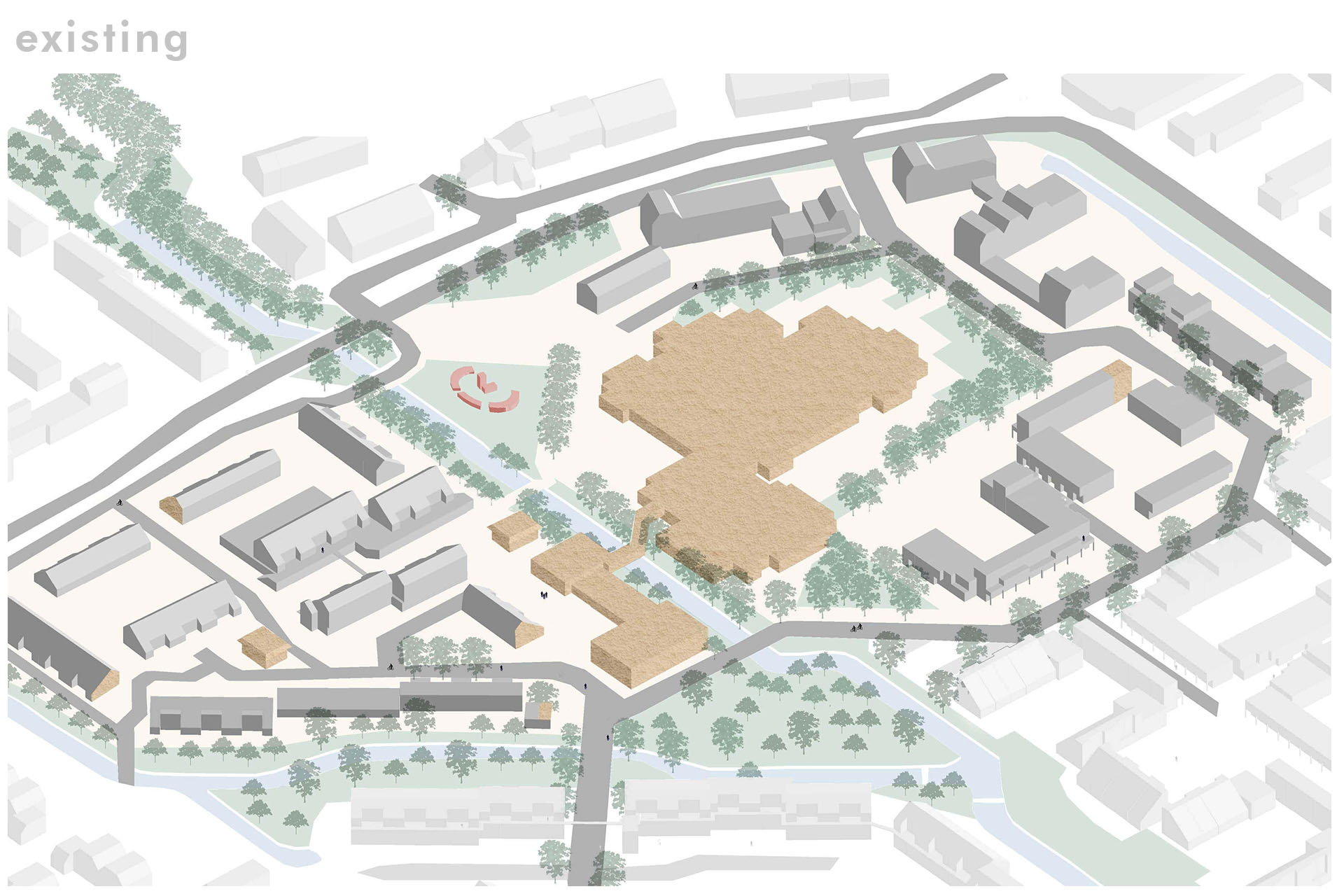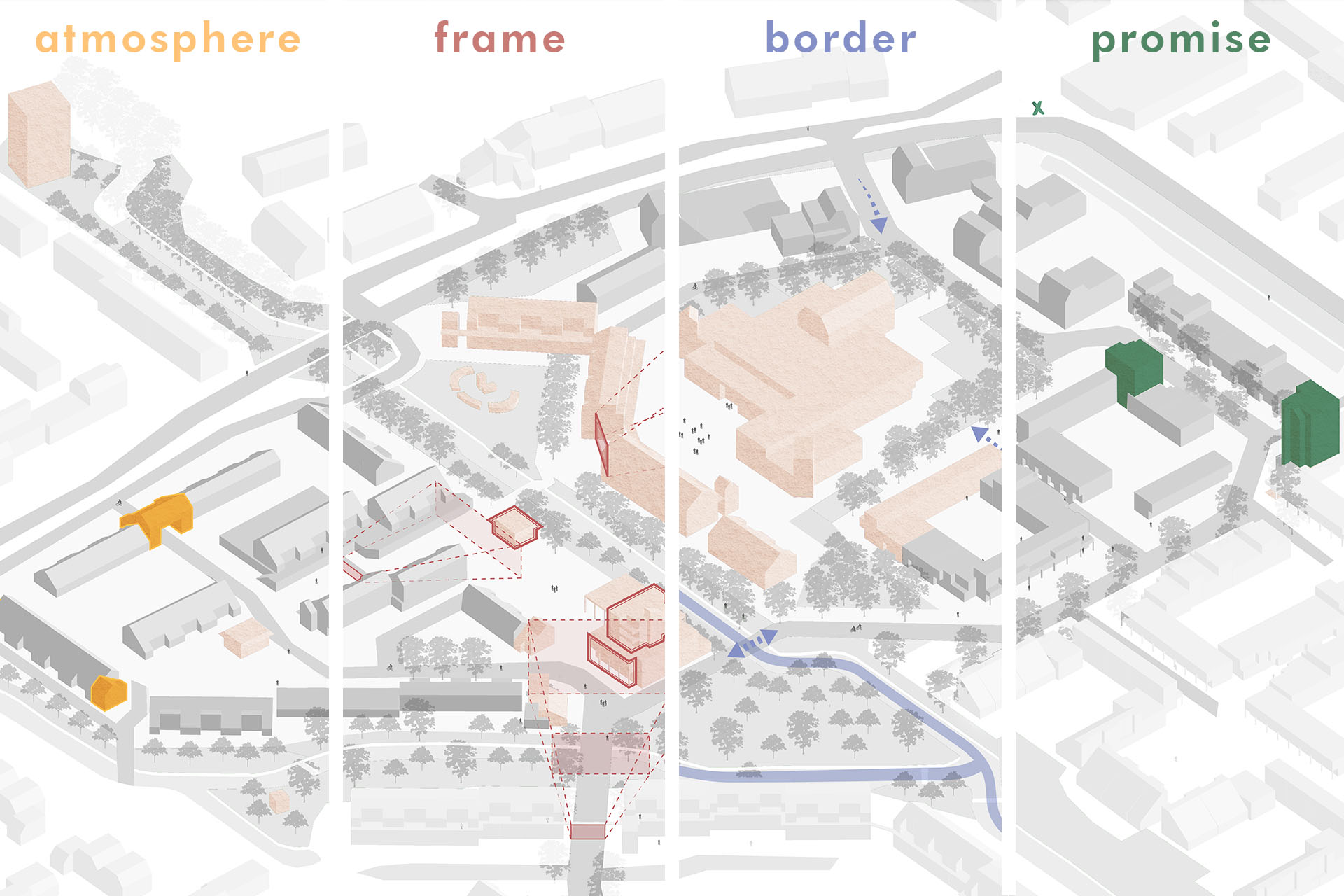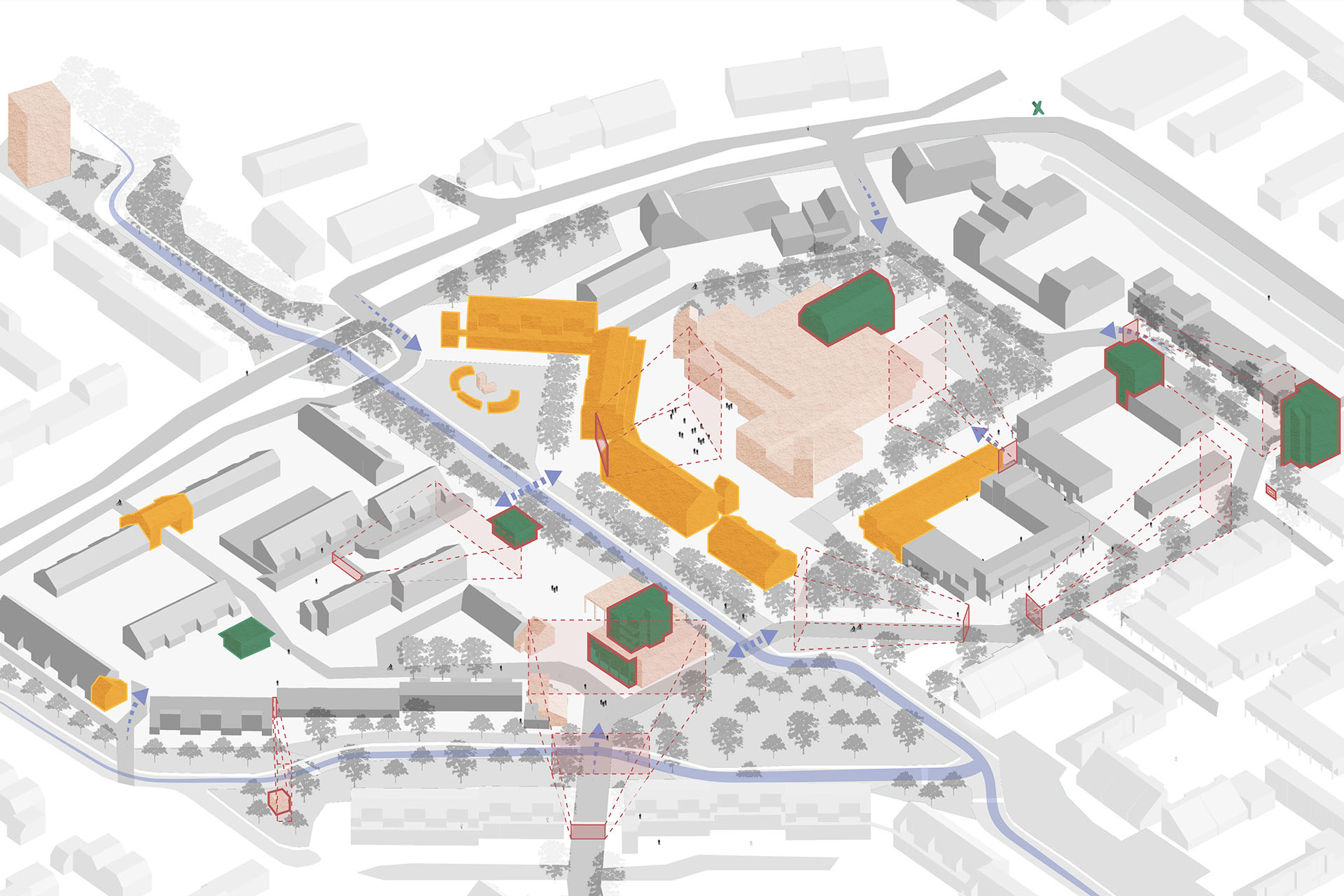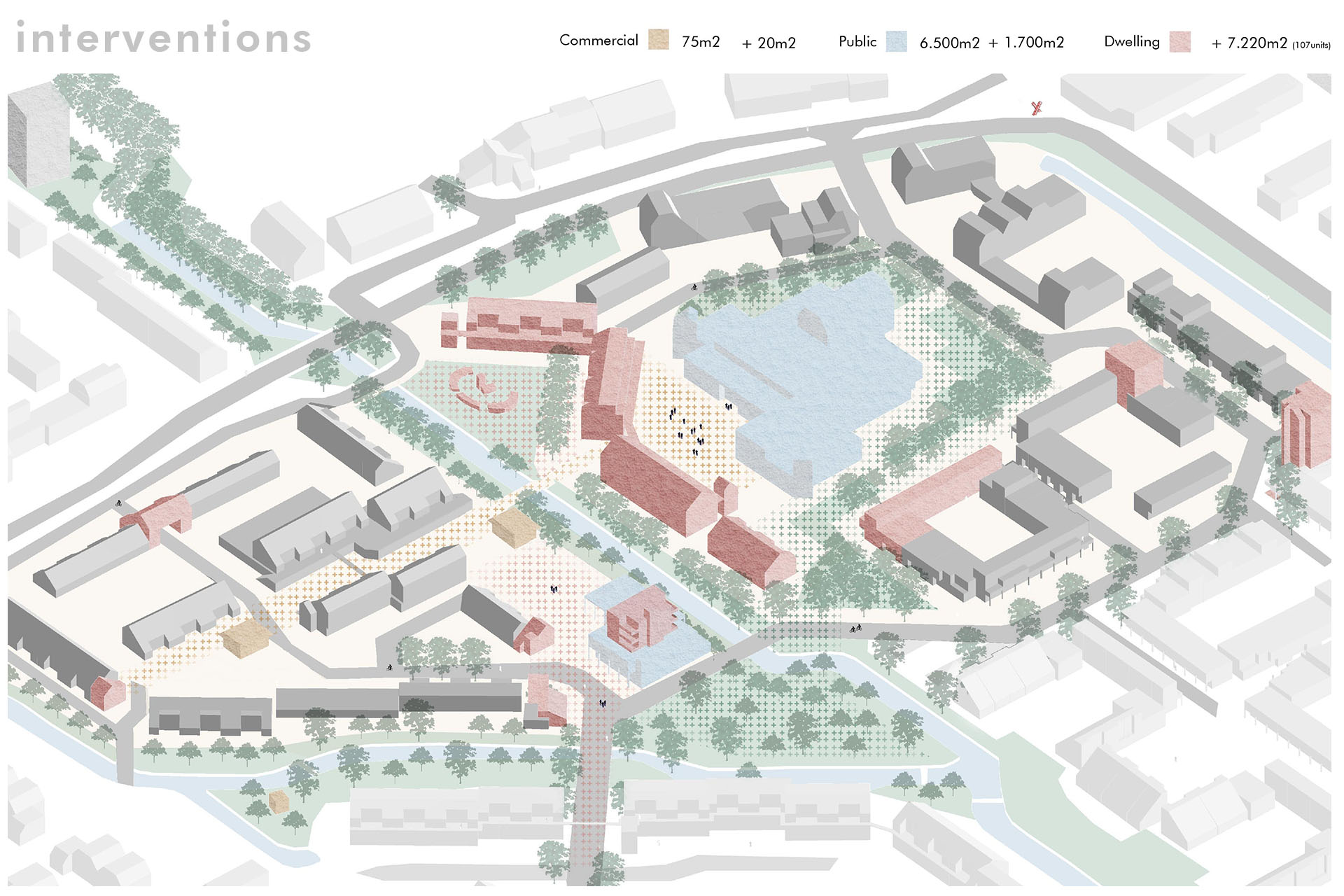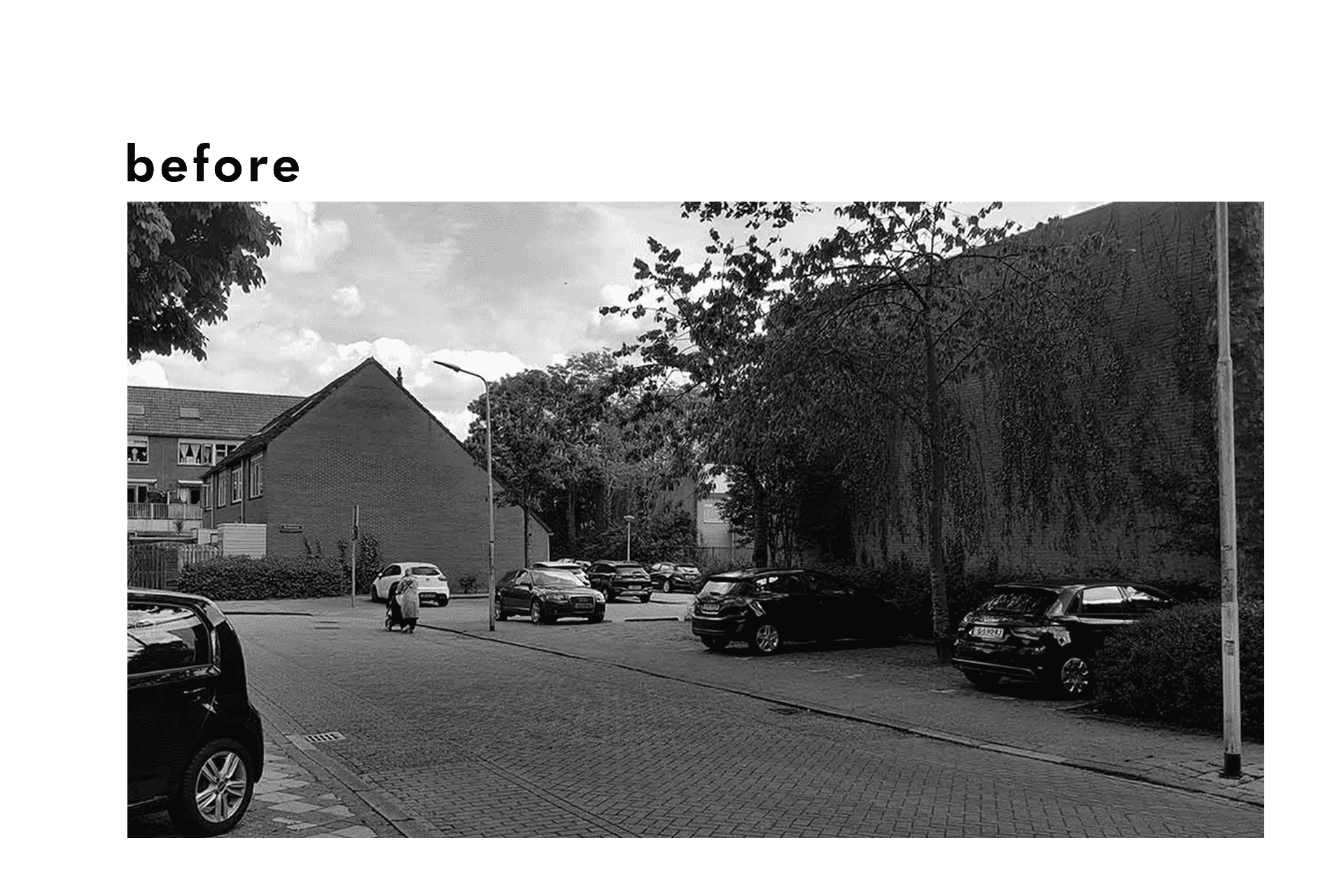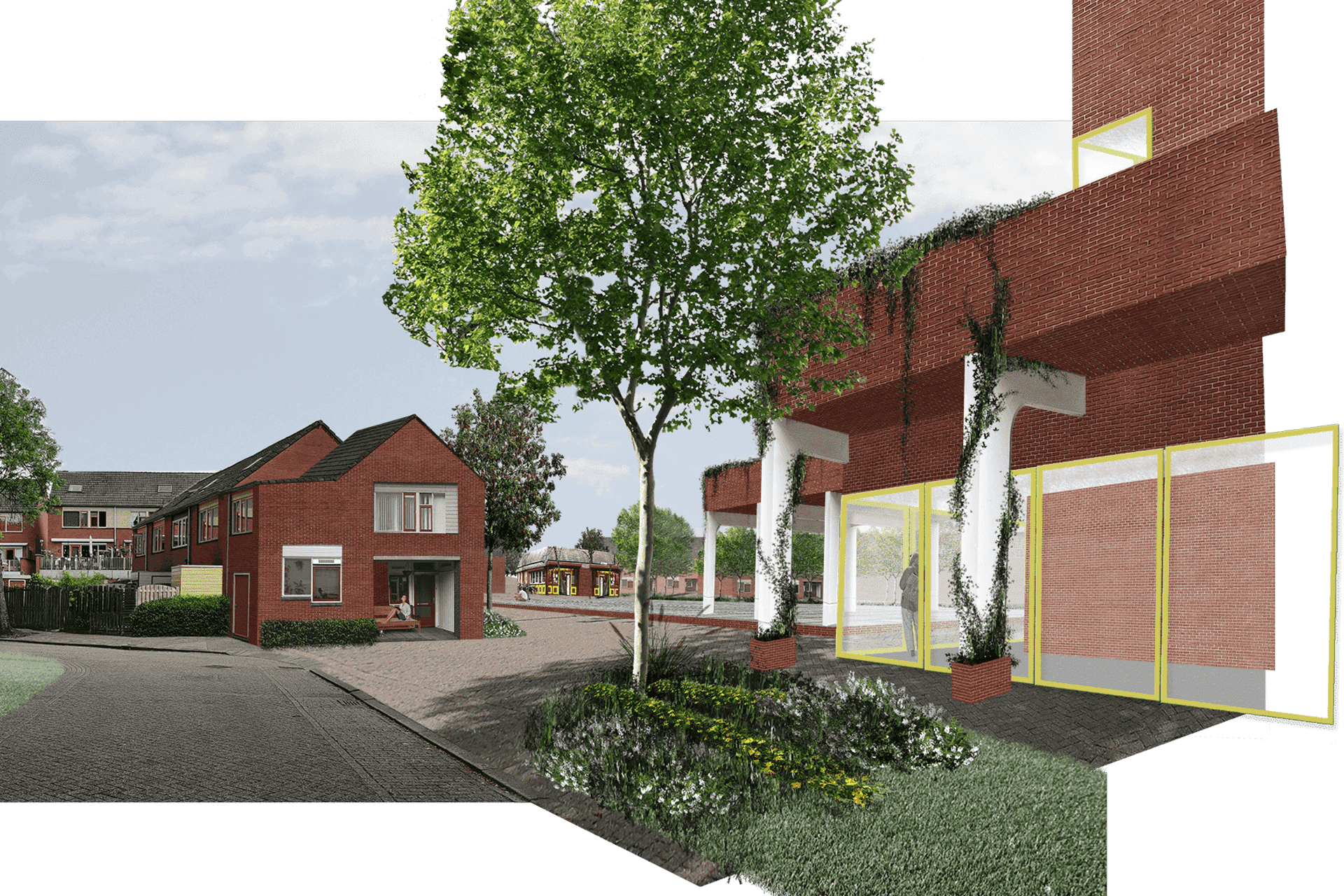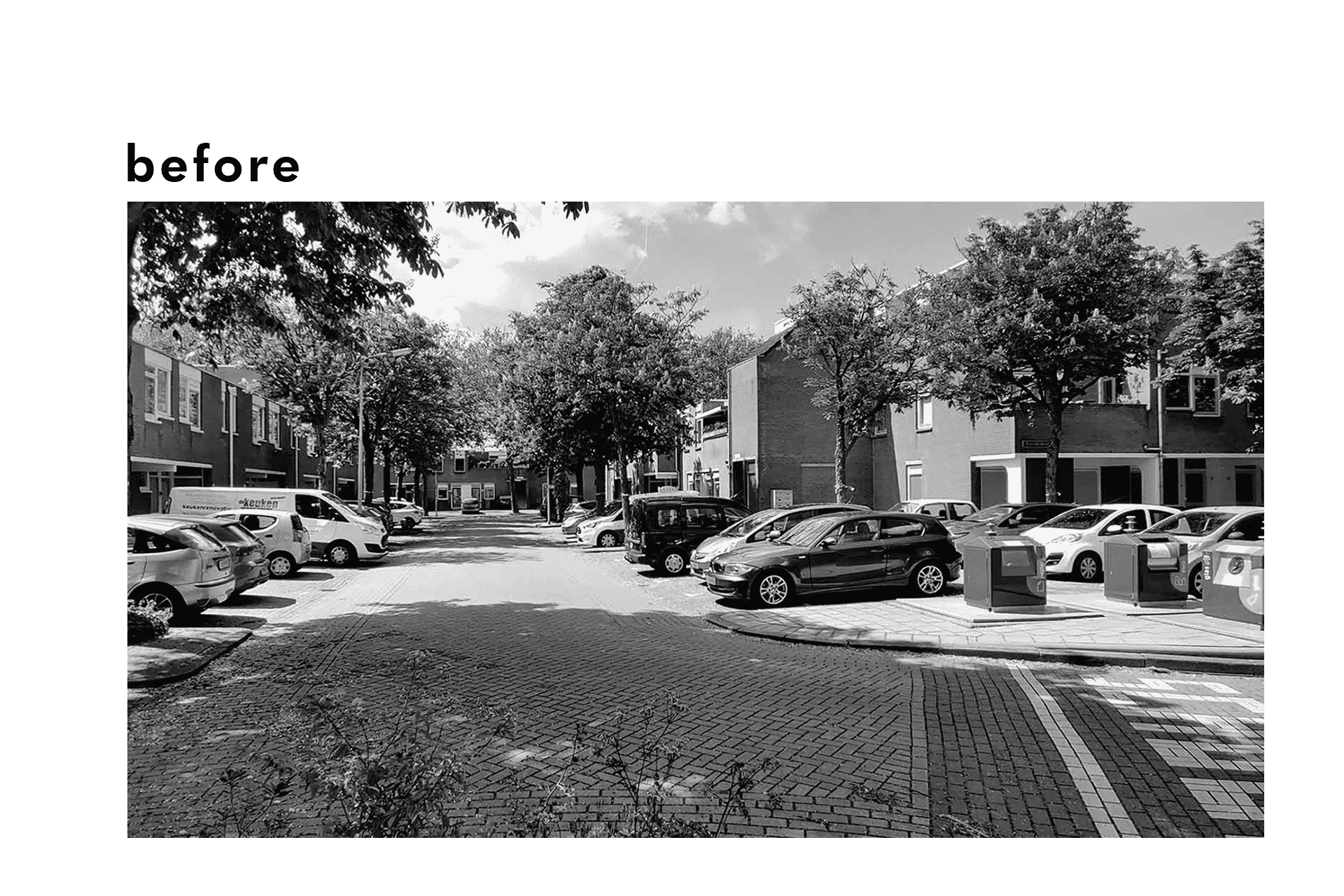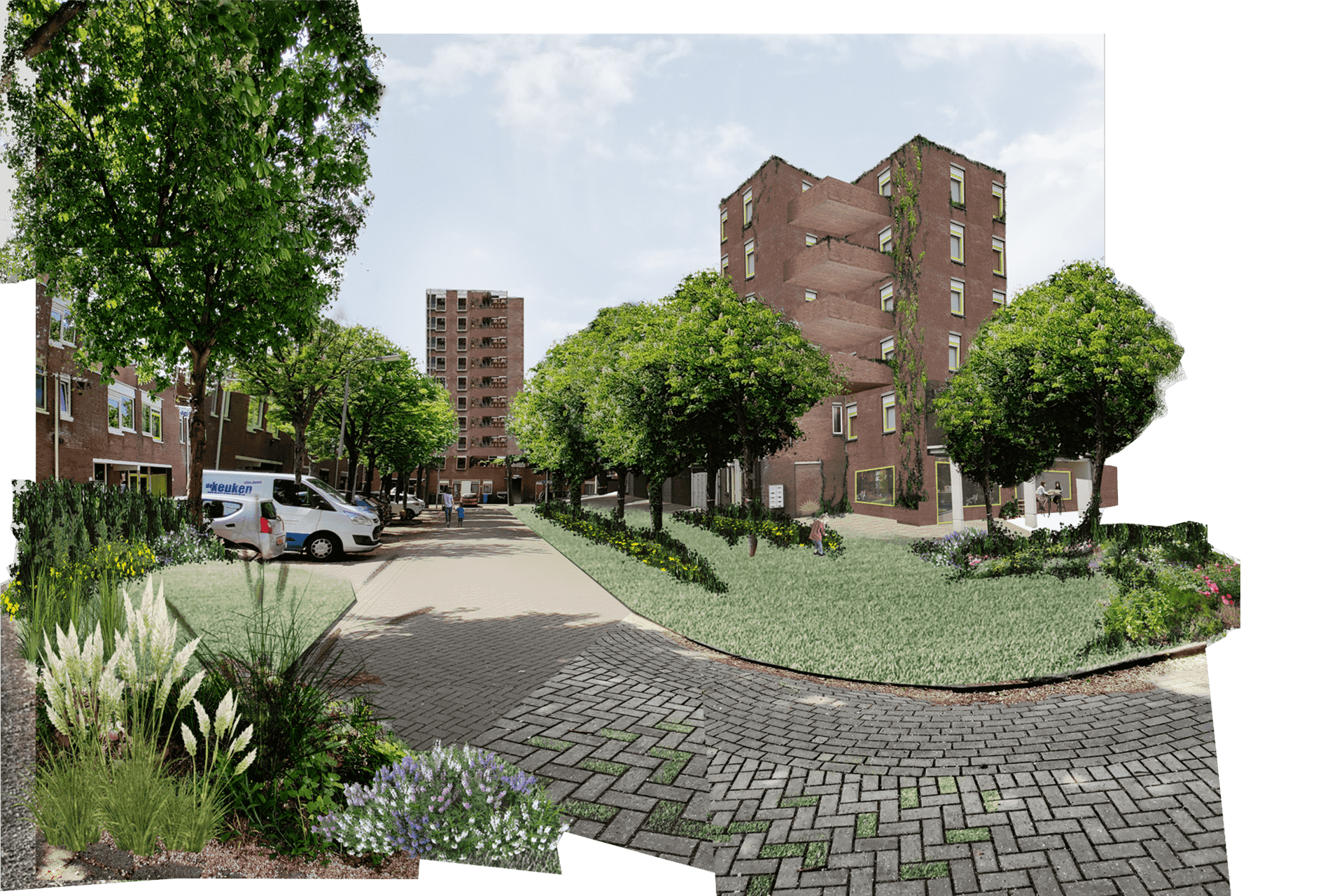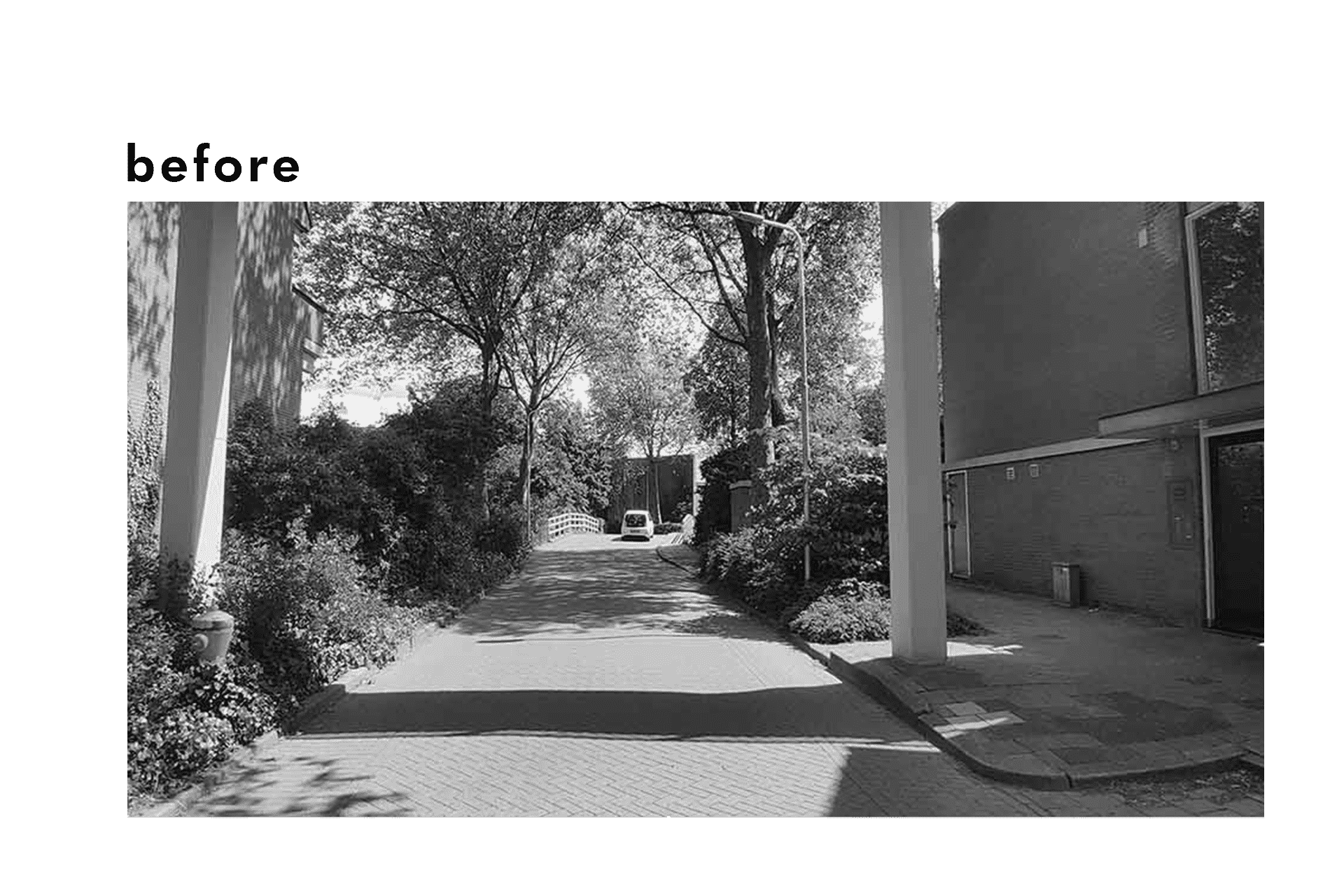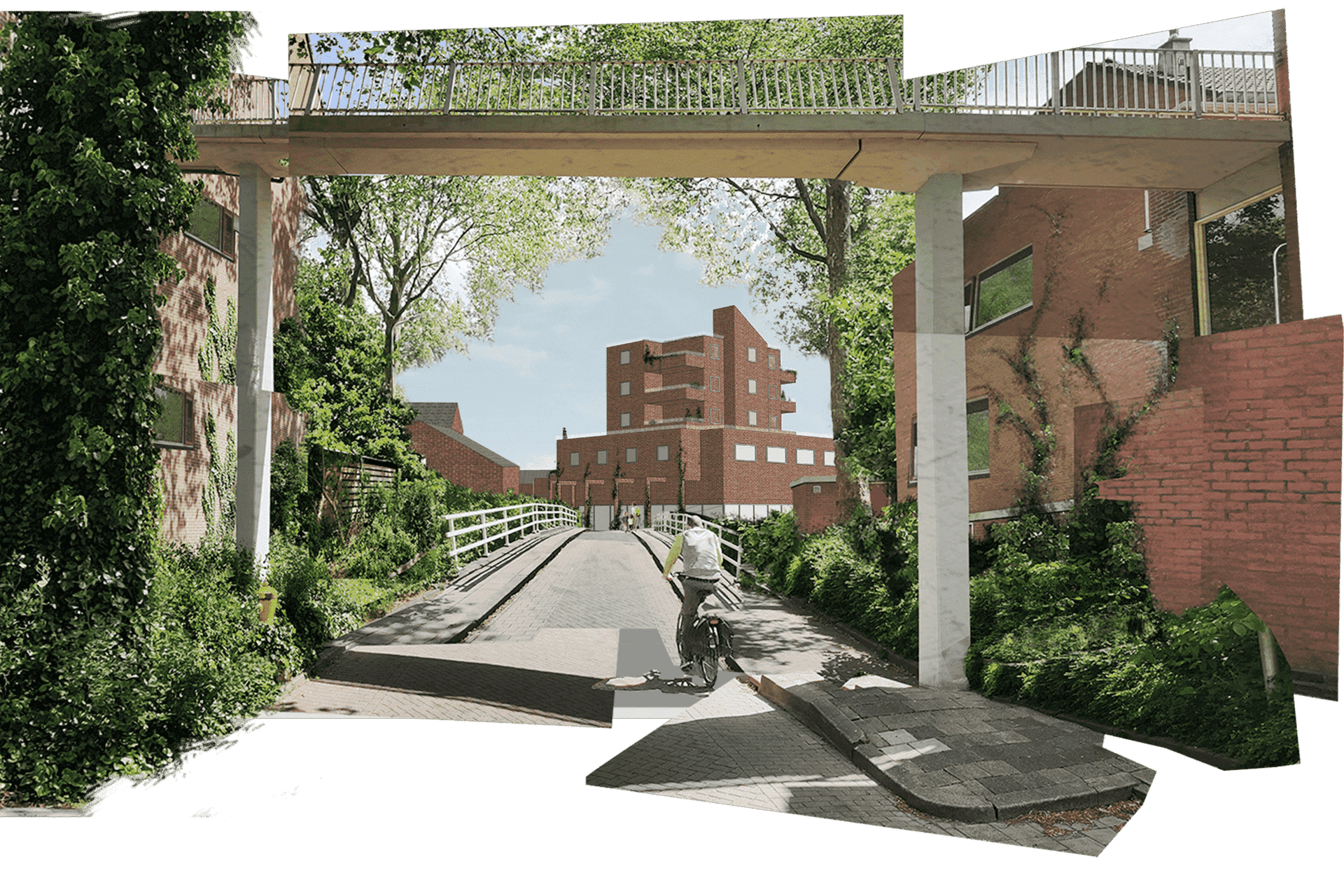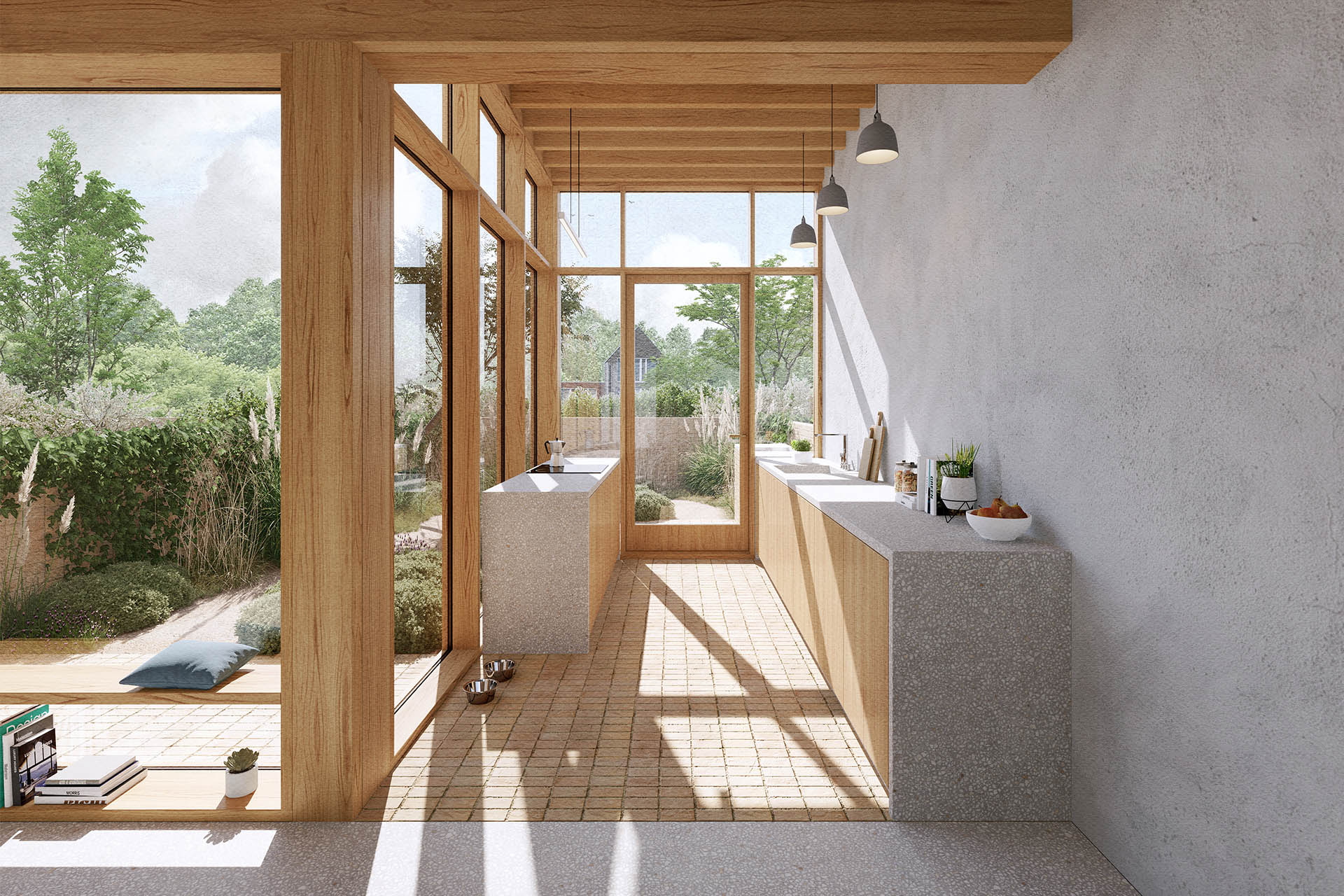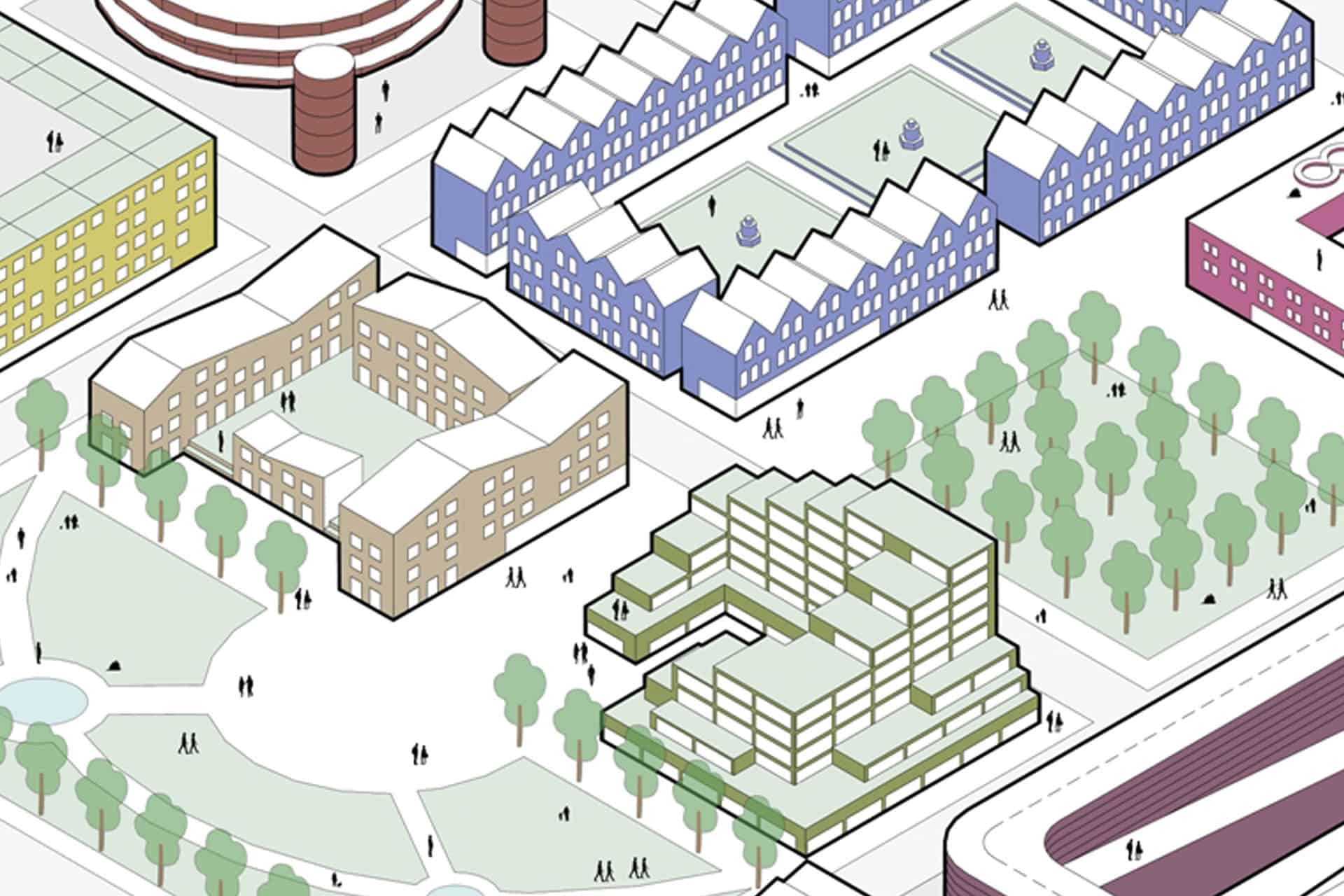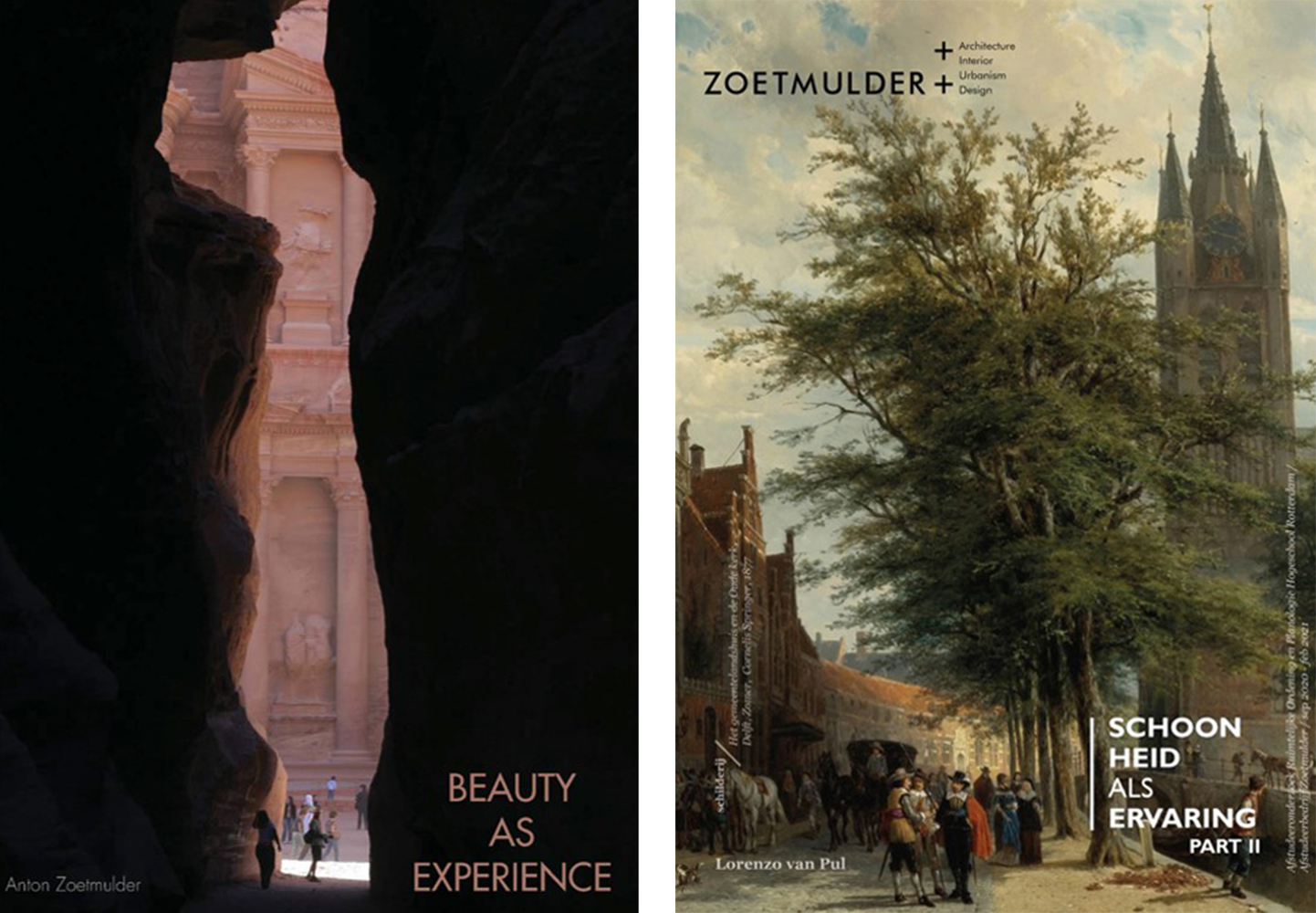discover quantity through quality
Four recurring elements – atmosphere, frame, border and promise – define our aesthetic experience of the built environment. Based on this ‘Experience of Beauty’, Zoetmulder has created a densification method for existing neighbourhoods that prioritises spatial quality over quantity. Through the analysis of three neighbourhoods in Delft, tools to apply this method manifested. The tools were subsequently tested on one of the case studies in Tanthof-Oost.
Densification is often approached with a mindset that focuses mainly on quantity of space rather than improving the overall quality of neighbourhoods along with it. The four elements atmosphere, frame, border and promise offer the opportunity for neighbourhood densification through a framework that creates beauty.
The identification of the four elements in existing neighbourhoods and the subsequent discovery of potential locations for densification creates the opportunity to densify on the terms of qualitative urban improvement. To facilitate its implication the found elements are transformed into design tools that have been collected in a toolbox.
Tanthof-Oost, a neighbourhood in the south of Delft, is the chosen case study showing possible applications of the tools. The analysis of the four elements in the current spaces, interviews with residents, advice on its feasibility from Stichting Dorp, Stad & Land and case information provided by the Municipality of Delft eventually led to four opportunity-maps. The maps show the presence and the potential of each element in the spatial context of the case study. Locations in which the potentials of different elements overlap are considered promising for improvement and possible qualitative densification of the neighbourhood.
The choice of locations to be densified and the tools to be used are substantiated by the four elements that come forth out of the interviews as well as observations on site. Some interventions refer to only one element, such as the addition of open gable ends to improve the sense of security and atmosphere. The tools, however, often refer to or improve multiple elements simultaneously. The addition of a volume that becomes the infill to an unused frame that serves the purpose of a promise within the existing atmosphere is an example for that. Most interventions are based on a combination of adding new volumes and adapting public space.
The result is a qualitative densification map that shows promising locations and abstract suggestions for the interventions. These can reach from urban planning to detailing scale and include planning and building through social interactions with the residents.
We have collected the design tools discovered in the research in a toolbox and then categorised them by element to aid future densification tasks.The creation of a toolbox that contains generic tools that can be utilised in different design processes is the goal of this research by design in order to make qualitative densification accessible to as many stakeholders as possible.
